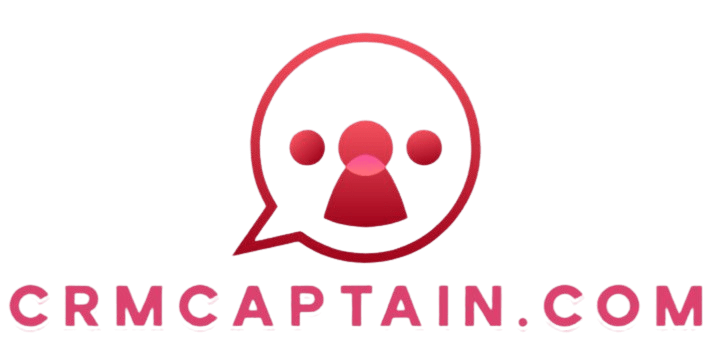“Best Practices for Supporting New CRM Users”
Navigating the world of Customer Relationship Management (CRM) software, which helps you manage customer relationships, can feel overwhelming for new users. Proper support is essential for facilitating a smooth transition and enabling users to harness the system’s capabilities.
This article delves into best practices for onboarding new CRM users, highlighting the importance of developing comprehensive training plans, providing ongoing support, and utilizing hands-on practice.
By measuring success and making necessary adjustments, organizations can ensure their teams effectively leverage their CRM systems. Let s dive in and discover how to empower your new users!
Contents
- Key Takeaways:
- The Importance of Proper Support
- Understanding the Needs of New CRM Users
- Best Practices for Onboarding New CRM Users
- Maximizing the Effectiveness of CRM Training
- Measuring Success and Making Adjustments
- Frequently Asked Questions
- What are some best practices for supporting new CRM users?
- How can effective communication help support new CRM users?
- Why is it important to provide ongoing support for new CRM users?
- What are some ways to encourage user adoption among new CRM users?
- What should be included in user-friendly documentation for new CRM users?
- How can a buddy system benefit new CRM users?
Key Takeaways:

Properly supporting new CRM users is crucial for their success and adoption of the platform. A comprehensive training plan and ongoing support are key best practices for onboarding. To maximize the effectiveness of CRM training, utilize interactive learning methods and continuously measure progress.
The Importance of Proper Support
In customer relationship management (CRM), having the right support is essential for seamlessly integrating CRM solutions that meet your goals. This support includes ongoing training and resources that are vital for user adoption and satisfaction.
When vendors prioritize user engagement and feedback, they can fine-tune their offerings to align with your business objectives, enhancing data integrity and the overall customer experience. Proper support is crucial for the success of any CRM initiative you undertake.
Understanding the Needs of New CRM Users
Understanding the needs of new CRM users is crucial for ensuring they navigate the complexities of CRM software with confidence and achieve their desired outcomes.
New users frequently encounter unique challenges in areas such as data management and comprehending the implementation plan, which can impede their ability to engage fully with the system. By proactively addressing these issues, you can significantly enhance user engagement and alleviate common pain points associated with CRM adoption.
Common Challenges and Frustrations
Common challenges you may encounter as a CRM user often arise from issues related to data integrity and the management of customer data. Adapting to new CRM systems can lead to decreased productivity and frustration.
Typical pain points include insufficient training, unclear processes, and concerns about data accuracy, all of which can impact customer satisfaction and business growth. As a new user, navigating complex software interfaces can feel overwhelming due to the multitude of available features.
Vendors have a crucial opportunity to alleviate these frustrations by offering targeted training sessions tailored to your specific needs and skill level. Establishing robust feedback mechanisms allows you to voice concerns and suggestions, fostering continuous product improvements and support that encourage a smoother CRM experience.
By prioritizing both education and user input, vendors can create a more user-friendly environment, ultimately enhancing your overall satisfaction.
Best Practices for Onboarding New CRM Users
The best practices for onboarding new CRM users involve a comprehensive approach that blends effective training, a well-structured program, and alignment with your business objectives. Successful onboarding ensures users are equipped with the skills and knowledge needed to leverage CRM solutions effectively.
This process requires a deep understanding of user needs, allowing you to incorporate insights into your training strategy, enhancing user engagement and overall satisfaction. Act now to implement these practices and ensure your team’s success!
Creating a Comprehensive Training Plan

Creating a comprehensive training plan for new CRM (Customer Relationship Management) users is essential. It ensures successful implementation and optimal use of CRM software.
Your plan should address specific training needs and cover essential features, workflows, and best practices aligned with your goals.
A well-structured training program can improve user adoption. It also helps with performance monitoring.
Tailor your training to different user roles. Sales representatives, marketers, and customer support teams each have unique requirements.
Ongoing assessments help gauge understanding and retention. Gathering user feedback provides valuable insights into the training s effectiveness.
Regularly updating the curriculum creates a dynamic learning environment. This ensures users grasp the system thoroughly and feel empowered to use it efficiently.
Providing Ongoing Support and Resources
Ongoing support for CRM users is crucial. It helps them maximize the system’s potential over time.
Provide easy access to training materials, user guides, and troubleshooting tools. These resources effectively refine their skills.
Creating a supportive environment enhances user satisfaction and drives superior business outcomes.
User forums are invaluable for sharing experiences. Imagine a resource library full of best practices and case studies to deepen understanding.
Regular training sessions keep users informed about new features. This fosters a culture of continuous learning.
With consistent support, users can adapt to changes easily, leading to streamlined workflows and boosted productivity.
Maximizing the Effectiveness of CRM Training
To maximize CRM training effectiveness, use a variety of methods. Blend interactive training, automation tools, and ongoing performance monitoring.
Engaging users through hands-on experiences helps them understand complex functionalities, fostering higher retention rates.
Leverage technology and analytics to refine training programs, adapting them to the evolving needs of business users.
Utilizing Interactive and Hands-On Learning
Hands-on learning techniques in CRM training enhance engagement. They help users navigate customer interactions with ease.
Real-world scenarios and simulations create an immersive learning environment, allowing users to develop skills and apply knowledge in real-time.
This approach boosts retention and builds confidence in using the CRM system. Tools like role-playing, gamified modules, and virtual reality can enhance learning.
These hands-on tools immerse users in training, fostering connections to the material. Use case studies reflecting actual business situations for strategizing and troubleshooting.
These dynamic methods ensure users understand theoretical aspects and master practical applications, which is vital for successful customer relationship management.
Incorporating Real-World Examples and Scenarios
Incorporating real-world examples and scenarios into your CRM training programs provides you with valuable insights and a contextual understanding of the customer journey. This strategy enhances your understanding. It also helps you visualize the impact of your actions on customer interactions.
When you engage with scenarios that mimic common business processes, you develop a deeper connection with the material. This hands-on experience reveals the nuances of managing customer relationships and shows how various CRM tools can streamline workflows. You’ll discover how various CRM tools can streamline workflows!
Navigating these relatable situations helps you identify challenges. You can then create effective strategies to enhance the customer experience.
Ultimately, this approach fosters a culture of continuous learning, giving you the power to leverage CRM functionalities with confidence and drive meaningful outcomes.
Measuring Success and Making Adjustments

Measuring success and refining your CRM training processes is essential for promoting ongoing improvement and enhancing user satisfaction.
It s crucial for you to implement performance monitoring tools and actively gather user feedback to evaluate the effectiveness of your training programs. By consistently assessing training outcomes and user experiences, you can pinpoint areas that need improvement, ensuring that your training stays aligned with the ever-evolving CRM landscape.
Tracking Progress and Addressing Issues
Tracking your progress and addressing challenges in CRM training is crucial for ensuring you meet your learning objectives and tackle any issues that come up.
By leveraging performance monitoring metrics and gathering user feedback, organizations can gain valuable insights into your experience. This allows them to identify and resolve problems swiftly, cultivating a culture of continuous improvement.
Effective tracking systems do more than measure your individual progress; they also reveal broader trends that can inform training strategies. Organizations should think about integrating user-friendly dashboards to visualize progress metrics, giving you a clear view of your development journey.
Encouraging an open feedback loop allows you to share your thoughts on the training process, helping to pinpoint specific areas that need enhancement. This dual approach of meticulous tracking and proactive feedback can significantly elevate your overall training experience, fostering a more engaged and skilled workforce.
Continuously Improving the Training Process
Continuously enhancing the training process for CRM users is essential for maintaining high levels of engagement and ensuring effective use of CRM software. This requires you to regularly review training content, include user feedback, and adapt to market trends to keep your training both relevant and impactful.
By cultivating an environment that prioritizes growth and learning, you can maximize user satisfaction and drive business growth. One effective strategy you can adopt is implementing regular content updates that showcase the latest features and functionalities of the CRM system.
Creating tailored learning paths based on user roles will help address specific skill gaps and improve overall usability. Additionally, encouraging ongoing user engagement through webinars, feedback sessions, and interactive forums can play a vital role in this process.
This lively approach keeps users informed and excited! It fosters a community of practice, ultimately leading to a smoother and more successful CRM implementation across your organization.
Frequently Asked Questions
What are some best practices for supporting new CRM users?
1. Provide comprehensive training: Ensure that new CRM users receive proper training on how to use the system effectively, including its features and functions.
2. Offer ongoing support: Make sure new users have access to continuous support through a help desk, FAQs, or a dedicated support team.
3. Create user-friendly documentation: Develop user-friendly guides and video tutorials to help new users understand the CRM system.
4. Implement a buddy system: Pair new users with experienced ones who can provide guidance and answer any questions.
5. Encourage feedback: Invite new users to share their experiences with the CRM system. This helps address any issues and make improvements.
6. Monitor usage: Track how new users are utilizing the CRM system. Provide additional support or training if necessary.
How can effective communication help support new CRM users?

Effective communication is crucial for supporting new CRM users. Clearly communicate any changes to the system, provide timely responses to inquiries, and actively listen to any feedback or concerns they may have.
Why is it important to provide ongoing support for new CRM users?
Ongoing support is crucial for new CRM users. They may have questions or encounter issues even after their initial training.
Providing ongoing support ensures they can continue using the system effectively, avoiding frustration or confusion.
What are some ways to encourage user adoption among new CRM users?
1. Highlight the benefits: Emphasize how using the CRM system increases efficiency and productivity to motivate new users.
2. Use incentives: Offer rewards or recognition for users who effectively embrace the CRM system.
3. Address concerns: Tackle any concerns or resistance from new users regarding the CRM system. Provide solutions or alternatives where possible.
4. Show the way! When management and experienced users embrace the CRM, it highlights its value.
What should be included in user-friendly documentation for new CRM users?
User-friendly documentation should include step-by-step instructions on using the CRM system, screenshots or videos to illustrate processes, and a comprehensive FAQ section for common questions or issues.
How can a buddy system benefit new CRM users?
A buddy system pairs new users with experienced ones who can provide personalized guidance and support. This helps new users feel more comfortable with the system and have a go-to person for any questions.






